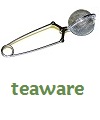Decaf Teas
- Views:
-
African Sunset Honeybush
from $13.50
Honeybush from South Africa has no caffeine, with 90% certified organic ingredients and no additional artificial or natural flavoring. Lemon freshness . . . to brew at sunset.
-
-
Butterfly Blue Pea Flower
from $18.50
This herbal blend brews a beautiful blue hue - soooo soothing!
-
Holy Basil, (Tulsi)
from $10.00
USDA Certified Organic, known as a de-stressor and also to lower blood sugar levels.
-
Marshmallow Cranberry Crime-Fighter
from $13.00
Dry places are moistened, hard conditions are softened - with this tea!

Two methods for decaffeination are used for our Decaf Tea: Most use the carbon dioxide method, an organic solvent which is easy to remove from the tea, leaves no chemical residue, and is relatively inexpensive to use. Harmless in small quantities, CO2 is pumped into a chamber with the tea where it bubbles around the tea to remove the caffeine. Then it is removed from the chamber and the process is repeated until most of the caffeine is gone. The other method is a water-washing method, using methylene chloride, which is approved by the FDA and the US Dept of Health & Human Services. This method washes out the caffeine as well as other nutrients, then the water is evaporated and the nutrients (minus the caffeine) are re-introduced into the tea. These processes cannot help but change the size and shape of the leaf, and many decaf teas are comparable to Broken Leaf grades of tea.
Caffeine in tea is absorbed and used differently in tea than in other beverages. Caffeine in tea provides a stimulant that works along with other components in tea, providing a more alert state of being while also calming our spirits and our bodies. The caffeine is released much more slowly than coffee, taking 15-20 minutes to be absorbed. Instead of being released directly into the bloodstream, the caffeine goes more gently into our central nervous system where it heightens our senses and increases wakefulness. For more information on caffeine in tea visit our blog post Caffieine in Tea. But for those whose bodies are sensitive to any caffeine or have heart/ kidney problems, the decaffeinated tea options are here for your choosing!




































